How to make an NFT for free and sell it: Guide for 2022

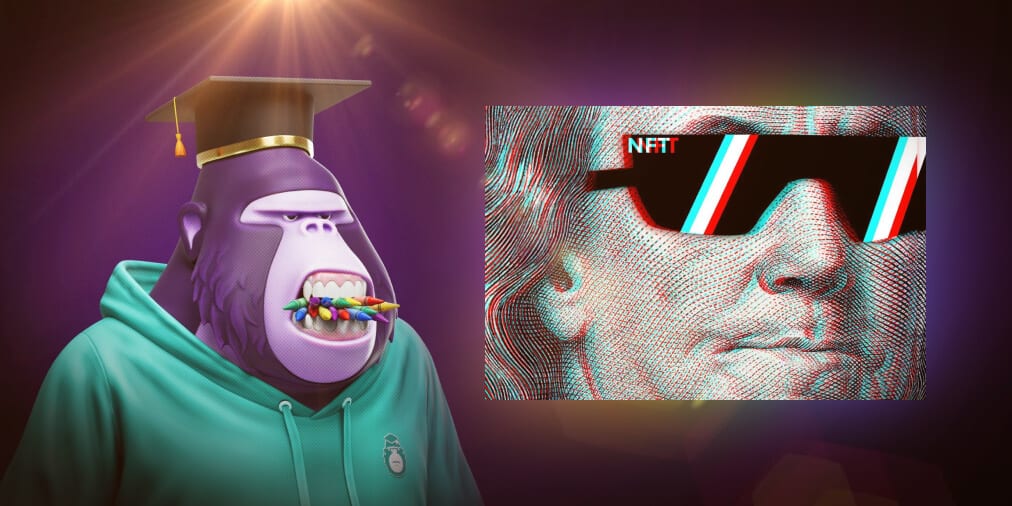
Table of contents
Non-fungible tokens, or NFTs, have taken the world of art by storm. They have become a source of immense recognition and wealth for artists like Pak and Beeple, whose most expensive art sales have reached $91.8 million and $69.3 million, respectively.
The NFT market size is also constantly growing and is expected to grow by USD 147.24 billion by 2026, according to research, with a yearly growth of 35.27%. With the development of the metaverse, NFTs are becoming more widely available and can be showcased in metaverse galleries and seen from the comfort of your home. The rapid development and growth present an amazing opportunity for all those interested in creating their own tokens.
There are also some additional benefits to releasing an NFT. It gives ownership to digital media. Unlike platforms like Spotify or Netflix where the users don’t actually own the content, people can buy digital pieces on NFT marketplaces and have proof of their ownership. It’s an amazing opportunity for the fans to show their appreciation to the artist. But there is another bonus in it for the artist: they can trace the ownership of the art they created and receive a percentage of every sale made, meaning they can profit from their art piece even after it left their hands. Therefore, even if the piece did not make millions in the first sale, but gained substantially in value over time, the artist will not be at a loss.
And so, considering the market growth and the amazing art sales recorded up to date, it’s no surprise that if you’re an artist, or have got a great idea for a new token, the question of how to make an NFT may be on your mind. The process is fairly simple and does not necessarily require any up-front investment from the artist’s end. In fact, all you’re going to need is your art piece and a mobile device to mint the token.
If you want to jump on the bandwagon and try your hand at minting NFTs, here’s a step-by-step process of how to make an NFT.
Step 1: Create a Piece of Art
First, let’s answer the question: What is an NFT?
According to Investopedia, “Non-fungible tokens (NFTs) are cryptographic assets on a blockchain with unique identification codes and metadata that distinguish them from each other.”
They are similar to cryptocurrencies in that they are on the blockchain. However, unlike cryptocurrencies which are fungible tokens, they are unique and cannot be traded or exchanged at equivalency—thus they are non-fungible and cannot be used as an equivalent of money for transactions.
Any digital file can be turned into an NFT. An NFT can be an extremely versatile medium. Basically, any type of medium, such as an image, a video, or an audio clip, can be turned into an NFT. Even some physical items have been turned into NFTs, such as Dolce and Gabbana couture or Nike shoes.
Depending on your artistic interests, you can submit a drawing, a photograph, a piece of music, or a whole video—it’s up to you. If you are in need of free design software for your NFT project, you can check out Canva, Adobe Express, or Krita.
There is also programmable or generative art: the artist uses computer programming to create their pieces. These include projects like CryptoPunks and Bored Ape Yacht Club. Or, if you’re thinking of something different, for instance, John Gerrard’s art project, including his newest Petro National collection.
So, once you’ve made your art piece, or art collection, and are ready to show it to the world, you can move on to step two.
Step 2: Get a Crypto Wallet
You’ll need a digital wallet in order to make and sell your NFT. Some of the most popular crypto wallets include Coinbase, MetaMask, and Trust Wallet; you can take your own pick. The process of setting up a crypto wallet is very easy; in fact, it’s basically like any other online registration. You can download one of the apps to your smartphone and sign up there.
If you decide to forgo the free NFT minting and opt for paid options, you will also need some cryptocurrency, for instance, ether. However, there are multiple free minting options available, so that’s absolutely not a have-to.
Step 3: Pick a Platform to Sell On
There are multiple marketplaces available, so think about what is important to you when you make your choice. There are different issues to consider: the blockchains available on the marketplace, the prices, the environmental impact, and the marketplace size. Think about what is important to you and make your decision wisely.
Some marketplaces might require you to pay for minting your NFT, but it’s not unavoidable. If you don’t have any extra funds to spare, you might choose marketplaces where making an NFT is free, for instance, OpenSea or Rarible. Consider whether you want a large or a smaller marketplace: A large one means there are more people using it, but your art can be lost among all other NFTs. A small one, on the other hand, may offer more specialized content instead of all NFTs and might be more tailored to your needs, but it does not reach a wide audience.
If your one hangup regarding the cryptocurrency sphere is its famed the negative ecological impact and high carbon footprint, there is plenty of more ecologically friendly solutions than the carbon-heavy Ethereum. There are Solana-based marketplaces like Solsea or Magic Eden are considered one of the more environmentally friendly solutions; in fact, Solana announced last year it managed to achieve carbon-neutral footprint thanks to carbon offsets. We’ll have a more in-depth look at marketplaces that offer free minting options below, but you can also check out our overview of NFT marketplaces here.
Once you’ve chosen the platform, set up an account and link your crypto wallet. Again, setting up an account is relatively easy—simply put in your user name and bio like you would on any other platform. As soon as your wallet is linked, you’re ready to mint your first token.
Step 4: Pick a Blockchain
While the term blockchain is thrown around a lot, let’s first have a look at what blockchain actually is.
Investopedia defines blockchain as “a distributed database that is shared among the nodes of a computer network. As a database, a blockchain stores information electronically in digital format.” It is mostly associated with cryptocurrencies and NFTs.
We’ve already slightly touched upon the importance of choosing the right blockchain while minting your NFTs. There are different options available, though the most popular one remains the Ethereum network. While used most often, there are some drawbacks to it: Ethereum minting fees, the so-called ‘gas’ fees, are relatively high when compared to other blockchains, and it’s got a massive carbon footprint.
This means while the use of Ethereum is widespread, it might be worth looking into other blockchains. Luckily, many marketplaces offer more than just one blockchain option. For instance, the most popular marketplace Opensea uses three blockchains: Ethereum, Polygon, and Klatyn, while Rarible operates on Ethereum, Flow, and Tezos.
If ecological solutions are important to you, there are also a few different options to consider. Flow, Tezos, and Polygon are all considered more environmentally friendly, while Solana blockchain is carbon neutral.
Step 5: Mint Your NFT
Minting NFT refers to the process of publishing it on the blockchain to make it purchasable.
Once you’ve picked your marketplace and the blockchain of your choice, it’s time to mint your NFT.
Set up your marketplace account and link your crypto wallet to your account so that you can receive payments. Fill out your bio so that people can learn something about you as an artist.
When choosing the right time to mint an NFT, remember that time of day matters. Depending on when you upload your file, the gas fees, that is the cost of putting the NFT on the blockchain, may differ. For lower fees, you may opt for minting your token in the early morning or late evening. Even if you’ve chosen to mint your NFT for free, these fees still exist, but they are pushed onto the buyer, so you’ll need to keep them in mind when setting a price for your token. By maintaining them as low as possible, you’ll be able to make a larger profit.
Once the account is ready, you can get to work. Click the button ‘Create an NFT,’ and choose the appropriate file. Set up the price, choose how many tokens you want to mint (is it a one-off or a collection?), and add the work’s title and description. You can also add the description of the entire collection if you’ve decided to create more than just one NFT.
Then, choose the blockchain you want to upload your file.
Choose whether you’re setting up an auction or selling your NFT at a set price. You’ll have three options:
- Fixed price – you’ve set up a fixed price you’re interested in and picked out the time range you want your listing to be active. It’s basically a “buy now” option.
- Timed auction – set up a minimum price (the reserve price) for your NFT. Whoever places the highest bid during the auction, buys the token.
- Open for bids – you don’t set up a price; people can make offers on your NFTs. This option is generally used when reselling NFTs.
Step 6: Sell an NFT
Your work is not done once you click the “create” button. While many budding artists may think it’s enough to just mint your NFT, there’s quite a lot of marketing in promoting your art when you’re starting out. Now, it’s time to be proactive and actually find buyers for your token. Otherwise, you’re leaving everything to chance, and that’s not a good idea when you’re only starting out in the art sphere.
Never underestimate the power of social media marketing. Promote and hype up your NFT drop; you might even consider posting teasers of your token before the official launch. Post on your social media, Twitter, Istagram, TikTok and the like, and post about your new creation there. Ask your friends and family to share your posts to reach more people.
Find NFT groups and communities and share your creation. Hit Discord channels, Telegram, and Reddit and talk to people there. Do your research to find out where you may reach people that would be interested in your NFT. You can also add your NFT project to the NFT Calendar to gain more recognision. You can order a PR article or write one yourself, promoting the drop; reach out to crypto and NFT-related publications to get more attention from people directly involved in the NFT world.
Sure, you might just leave it in the hands of fate, but it’s usually a much better idea to do some promoting of your project, look for like-minded people, and reach out to NFT enthusiasts. Like with every other project, its success largely lies with you.
Keep an eye out for bids after your NFT becomes public so that you don’ lose an opportunity to make a sale. Platforms should inform you whenever someone makes an offer, but it’s always good to be on the safe side. If someone decided to buy your token for the fixed price you’ve set up, the transaction usually goes through automatically and you receive the funds for your token.
List of Popular Marketplaces Where to Sell NFT
There are a number of marketplaces you can choose to sell your NFT; some of them are very large like Opensea, while others may be small and offer more specialized services or collections, for instance, Async Art which offers programmable art. Each of them is different and offers different features, blockchains, and reaches out to different audiences. When creating your NFT, consider what is important to you and which marketplace will work best for you.
Here’s an overview of the most important NFT marketplaces that offer free minting options.
Opensea
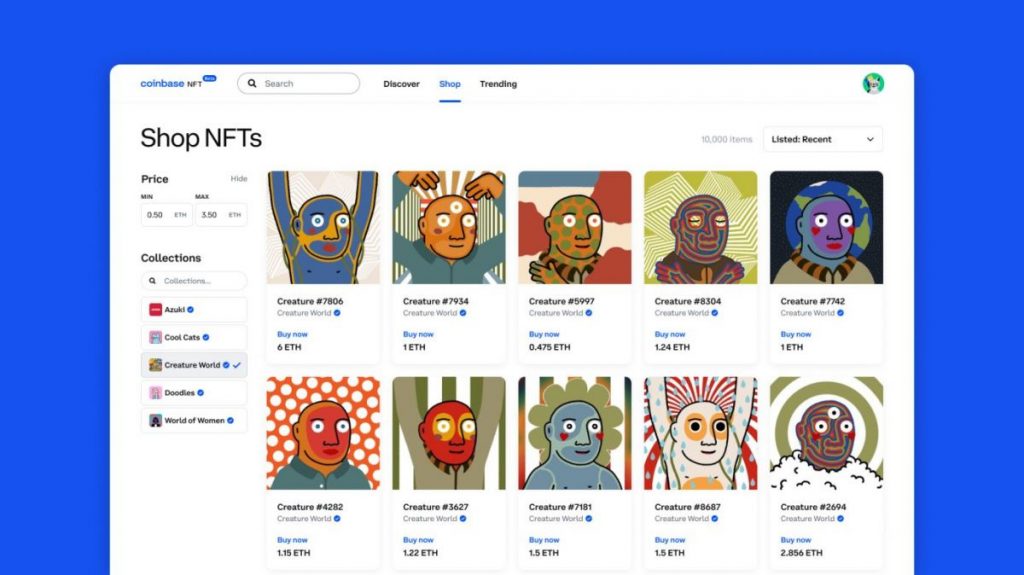
Let’s start with “the first and largest NFT marketplace,” Opensea. Founded in 2007, Opensea is an Ethereum-based marketplace with more than one million users, and it accepts more than 150 cryptocurrencies and supports 14 different crypto wallets. it operates on three blockchains: Ethereum, Polygon, and Klatyn, so you can opt for either the more popular but slightly more expensive solution, or more ecologically friendly ones.
There is practically everything there—digital art, music, domain names, in-game items, and collectibles. However, its size and a large collection of NFTs may be its drawback as your project may be simply lost among countless others.
Binance NFT
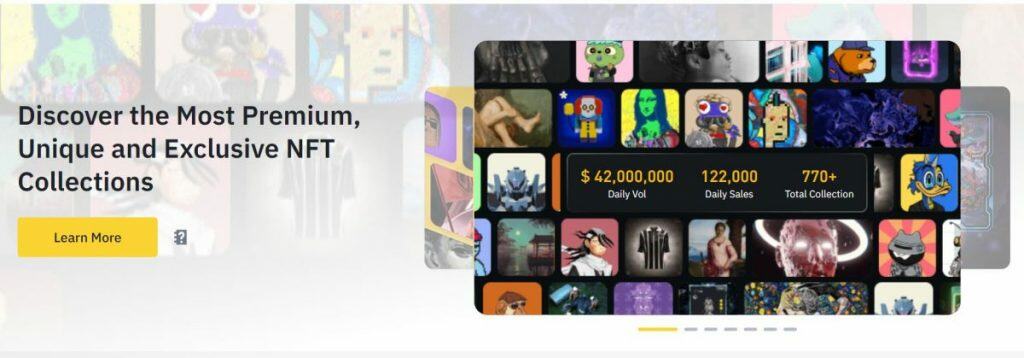
Let’s have a look at another large NFT marketplace—Binance. As the name suggests, the marketplace is run by cryptocurrency exchange Binance. It charges a 1% transaction fee, and you don’t need to collect your earnings in crypto –the platform offers quick fiat cash outs, as well. It offers NFTs on two blockchains, Binance Smart Chain and Ethereum, and supports BNB, BUSD, or ETH tokens.
While the Binance marketplace has a 0.005 BNB minting fee, the first 10 NFTs you mint are free. Binance NFT offers art, photography, animation, and gaming NFTs, so if it’s your jam, you can check it out.
Crypto.com NFT Marketplace
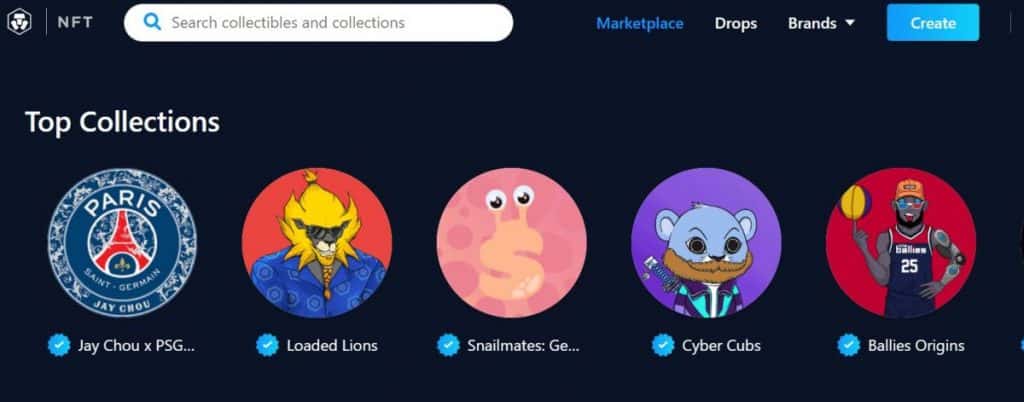
Another marketplace was launched by a cryptocurrency exchange. Crypto.com NFT marketplace has quickly garnered popularity among artists and celebrities, and even celebs like Aston Martin, Snoop Dogg, and Boy George have used the platform to launch their own NFTs.
The platform offers a wide range of NFTs, including art, gaming, sports, and music. As an artist, you can choose whether you prefer selling your art at a fixed price or through action. It operates on both the Crypto.org chain and Ethereum, and there are no transaction fees for users purchasing tokens with crypto.com.
Coinbase NFT

This Ethereum-based Coinbase NFT is still in its beta stage, so it’s unfortunately not available to everyone. There are some advantages to it, though. In the early stages of development, there are no transaction fees on Coinbase NFT. However, you cannot simply join the platform to mint your new NFT and need to add yourself to the waitlist. It is also not yet certain what the fees will be once the platform is launched for the general public.
AsyncArt
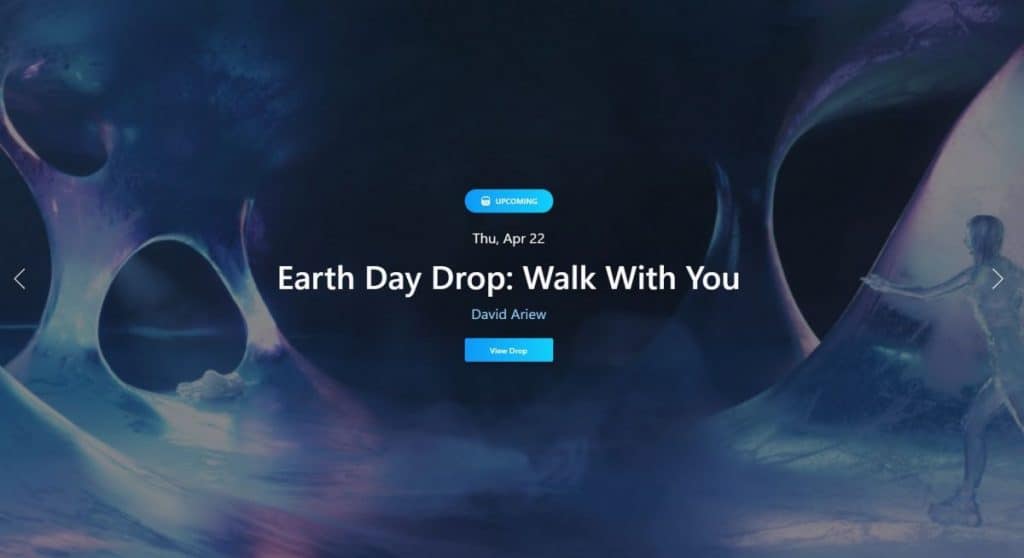
This marketplace specializes in programmable art—interactive NFTs that can be altered by the artist or their separate layers can be sold to different buyers who can then make changes to them. If you’re into this kind of projects, it might be the right place for your art.
The marketplace offers digital art, music, and video, and the platform supports gasless minting. The platform has also recently introduced Async Music Blueprints feature, a generative music tool for musicians. It offers one-of-one “audio NFT collections from a single source.” According to the announcement, “Music Blueprints unlocks personalized experiences for fans, breaks down technological barriers for musicians, and leverages opportunities for the music industry in the web3 space.”
Rarible
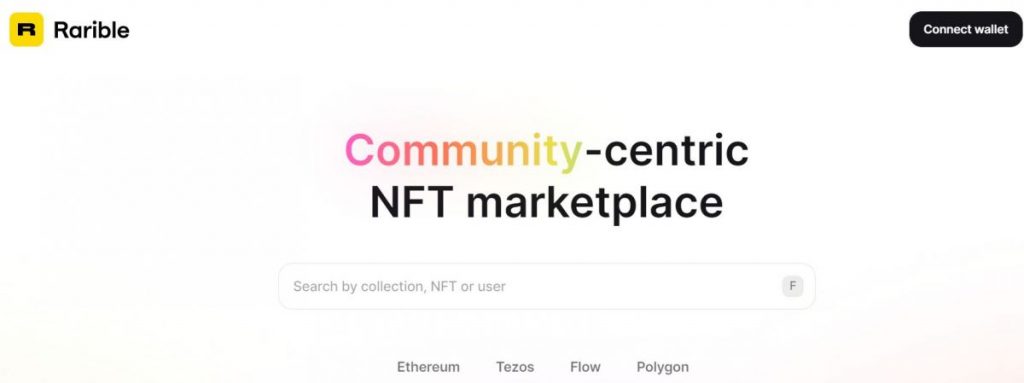
This community-centric NFT marketplace is where users can make decisions regarding the development of the platform, moderation, and future updates. It offers a wide range of NFTs, including art, photography, poetry, and game items.
It uses five blockchains: Ethereum, Flow, Tezos, Polygon, and Solana. While Ethereum is expensive and associated with high carbon emissions, Flow gas fees are very small. There are also “lazy minting” options available for users. Rarible has also recently announced it is lowering gas fees on the platform, so both the buyer and the seller pay smaller fees than before when a transaction occurs.
Nifty Getaway
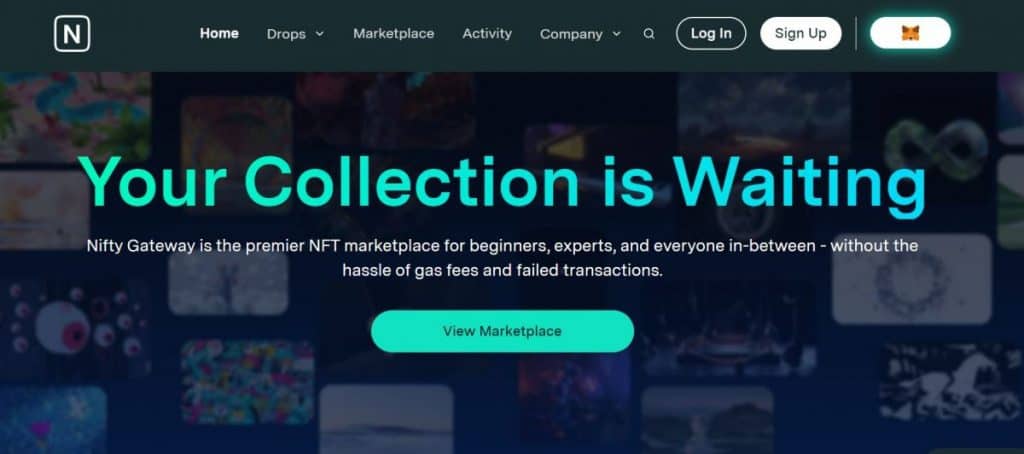
It’s the platform that has seen the biggest and most expensive NFT sales to date. Collaborating with artists like Pak and Beeple, the platform is dominated by celebrities and well-known artists. In fact, many famous people have used the platform to sell their NFTs, including hip-hop icon Eminem and musician Grimes. The largest-ever art sale by a living creator has taken place on the platform—Pak sold his collection The Merge for $91.8 million in late 2021.
However, Nifty Getaway offers some cool options other platforms rarely do. Nifty believes in “making NFTs accessible to everyone,” and so it does not require buyers to use cryptocurrency in order to buy NFTs; buyers can pay with fiat currency, that is government-issued currency, and all they will need is their credit card.
The fact the platform offers so many celebrity NFT drops can be a blessing and a curse for an artist who is just starting out. The art of a budding artist can go unnoticed among more popular and recognizable artists; however, the sheer size and popularity of Nifty Getaway can still act in your favor.
Welcome to the Metaverse!
With the NFT market size growing constantly, NFTs selling at impressive prices, and new amazing art pieces taking the world by storm, it’s no surprise people want to try their hand in creating new tokens. Sure, it’s unlikely you’ll get millions of dollars for your first creation, but it doesn’t mean it’s any less fulfilling when your art gets attention.
The world has never offered so many tools for artists, and it’s never been as easy to start out and reach millions. So, take a pencil or a stylus pen, and create your first masterpiece.
Read related posts:
- MetaGuide: How to mint NFTs on Solana?
- How to buy Solana NFTs: A beginners guide to buying NFTs with SOL
- How to make an NFT for free and sell it: Guide for 2022
- Buy NFTs in 2022: How to Buy NFTs and Which NFT to Buy
- Top 50 Text-to-Image Prompts for AI Art Generators Midjourney and DALL-E
Disclaimer
In line with the Trust Project guidelines, please note that the information provided on this page is not intended to be and should not be interpreted as legal, tax, investment, financial, or any other form of advice. It is important to only invest what you can afford to lose and to seek independent financial advice if you have any doubts. For further information, we suggest referring to the terms and conditions as well as the help and support pages provided by the issuer or advertiser. MetaversePost is committed to accurate, unbiased reporting, but market conditions are subject to change without notice.
About The Author
Karolina is a writer and journalist with a background in literary studies. She loves exciting tech solutions and art, and NFTs are often a perfect amalgamation of the two. Outside of work, she’s a plant mom, a vintage fashion enthusiast, and a gamer.
More articles

Karolina is a writer and journalist with a background in literary studies. She loves exciting tech solutions and art, and NFTs are often a perfect amalgamation of the two. Outside of work, she’s a plant mom, a vintage fashion enthusiast, and a gamer.

















































